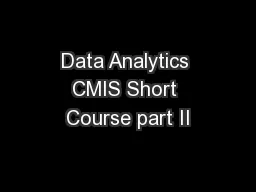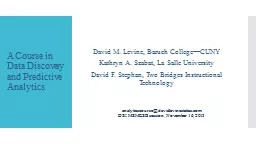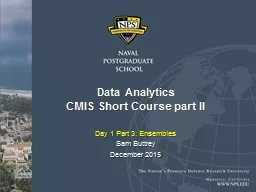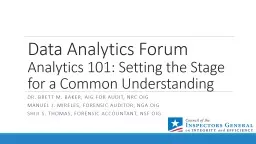PPT-Data Analytics CMIS Short Course part II
Author : test | Published Date : 2018-03-16
Day 1 Part 4 ROC Curves Sam Buttrey December 2015 A ssessing a Classifier In data sets with very few bads the naïve model that says everyone is good is highly
Presentation Embed Code
Download Presentation
Download Presentation The PPT/PDF document "Data Analytics CMIS Short Course part II" is the property of its rightful owner. Permission is granted to download and print the materials on this website for personal, non-commercial use only, and to display it on your personal computer provided you do not modify the materials and that you retain all copyright notices contained in the materials. By downloading content from our website, you accept the terms of this agreement.
Data Analytics CMIS Short Course part II: Transcript
Download Rules Of Document
"Data Analytics CMIS Short Course part II"The content belongs to its owner. You may download and print it for personal use, without modification, and keep all copyright notices. By downloading, you agree to these terms.
Related Documents














